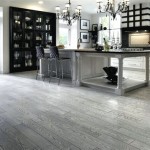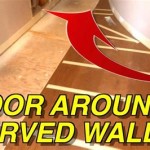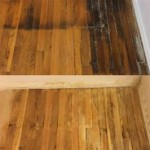Tools Needed For Hardwood Flooring Installation
Installing hardwood flooring is a significant home improvement project that can dramatically enhance the aesthetics and value of a property. While professional installation is often preferred, many homeowners with intermediate DIY skills choose to tackle this task themselves. Success hinges not only on careful planning and precise execution but also on having the right tools readily available. This article details the essential tools needed for a successful hardwood flooring installation, explaining their purpose and highlighting key features to consider.
Preparation Tools: Setting the Stage for Success
Before any boards are laid, the subfloor must be properly prepared. This is a crucial step that directly impacts the longevity and performance of the finished hardwood floor. Inadequate preparation can lead to squeaking, unevenness, and premature wear and tear.
1. Moisture Meter: Hardwood flooring is susceptible to moisture, and improper moisture levels are a primary cause of installation failures. A moisture meter is used to measure the moisture content of both the subfloor and the hardwood flooring planks. Most meters use either pin-type or pinless technology. Pin-type meters penetrate the surface and provide a precise reading. Pinless meters use electromagnetic waves to detect moisture non-invasively. The ideal moisture level will vary depending on the type of hardwood and the subfloor material, but generally, both should be within a specified range recommended by the flooring manufacturer.
2. Broom and Vacuum: Cleanliness is paramount. Before installation begins, the subfloor must be thoroughly cleaned of all debris, dust, and dirt. A broom is used for general sweeping, while a vacuum cleaner, preferably with a HEPA filter, is essential for removing fine particles that could interfere with the adhesive or create an uneven surface. A shop vacuum is particularly suitable for this task due to its powerful suction and capacity for handling large volumes of dust and debris.
3. Leveling Tools: Achieving a level subfloor is crucial for a professional-looking hardwood floor. Variations in the subfloor height can cause the hardwood planks to flex and creak. Several tools are used to identify and correct these imperfections. A long straightedge (at least 6 feet) can be used to visually identify high and low spots. A self-leveling compound is often used to fill in low spots, while a floor scraper or grinder can be used to remove high spots. A spirit level is also useful for checking smaller areas.
4. Trowel: When using self-leveling compound, a notched trowel is required to spread the material evenly across the subfloor. The size and shape of the notches determine the thickness of the compound layer. The manufacturer of the self-leveling compound will specify the appropriate trowel size for their product.
5. Chalk Line: A chalk line is a simple yet indispensable tool for creating straight and accurate layout lines on the subfloor. These lines serve as a guide for aligning the first row of hardwood flooring planks. A chalk line consists of a reel containing a string coated in chalk dust. The string is stretched taut between two points and then snapped to create a visible line on the surface.
6. Pry Bar and Hammer: Removing existing flooring, such as carpet or tile, is often necessary before installing hardwood. A pry bar and hammer are used to lift and remove these materials. Different types of pry bars exist, each designed for specific tasks. A flat pry bar is useful for removing trim, while a curved pry bar is better for lifting larger sections of flooring.
Installation Tools: Laying the Foundation for a Beautiful Floor
Once the subfloor is prepared, the actual installation of the hardwood flooring begins. This stage requires a variety of tools to ensure proper alignment, secure fastening, and precise cutting.
1. Hardwood Flooring Nailer or Stapler: The most common method for installing hardwood flooring is by nailing or stapling the planks to the subfloor. A hardwood flooring nailer or stapler is a specialized tool designed for this purpose. These tools deliver nails or staples at a consistent angle and depth, ensuring a secure and professional-looking installation. Nailers and staplers are typically pneumatic, requiring an air compressor for operation. The gauge (thickness) of the nails or staples will depend on the type and thickness of the hardwood flooring.
2. Air Compressor: A pneumatic nailer or stapler requires an air compressor to supply compressed air. The size of the air compressor will depend on the frequency of use and the size of the nailer or stapler. A compressor with a capacity of at least 6 gallons and a pressure rating of 90 PSI is generally sufficient for hardwood flooring installation.
3. Tapping Block and Pull Bar: Hardwood flooring planks are designed to fit snugly together. A tapping block and pull bar are used to gently tap the planks into place without damaging the edges. A tapping block is a small block of wood or plastic that is placed against the edge of the plank. A hammer is used to strike the tapping block, driving the plank into place. A pull bar is used to pull the last row of planks into place against the wall. Pull bars are designed with a curved end that allows them to grip the plank and exert force without damaging the wall.
4. Spacers: Expansion gaps are essential to allow for natural expansion and contraction of the hardwood flooring due to changes in humidity and temperature. Spacers are small pieces of wood or plastic that are placed between the edge of the flooring and the wall, creating a consistent gap. The size of the expansion gap will vary depending on the type of hardwood and the environmental conditions, but generally, a gap of ¼ to ⅜ inch is recommended.
5. Circular Saw or Miter Saw: Cutting hardwood flooring planks to the correct length and angle is an integral part of the installation process. A circular saw or miter saw is used for this purpose. A circular saw is a handheld power saw with a rotating circular blade. It is versatile and can be used for making straight cuts and angled cuts. A miter saw is a stationary power saw with a rotating blade that can be tilted to make angled cuts. Miter saws are particularly useful for cutting precise angles for corners and doorways. When using a circular saw or miter saw, it is important to use a blade designed for cutting hardwood to prevent splintering and tear-out.
6. Jigsaw: A jigsaw is a handheld power saw with a reciprocating blade. It is used for making curved cuts and intricate shapes. A jigsaw is particularly useful for cutting around obstacles such as pipes and door frames. When using a jigsaw, it is important to use a blade designed for intricate cuts and to cut slowly and carefully to prevent splintering.
7. Measuring Tape: Accurate measurements are essential for a successful hardwood flooring installation. A measuring tape is used to measure the length of the room, the width of the planks, and the distance between obstacles. A long measuring tape (at least 25 feet) is recommended for measuring larger rooms.
8. Safety Glasses and Ear Protection: Safety is paramount when working with power tools. Safety glasses are essential for protecting the eyes from flying debris. Ear protection, such as earplugs or earmuffs, is essential for protecting the ears from loud noises generated by power tools.
Finishing Tools: The Final Touches
Once the hardwood flooring is installed, a few finishing touches are needed to complete the project. These include installing baseboards, shoe molding, and thresholds to create a seamless and professional-looking finish.
1. Nail Gun or Finish Nailer: Baseboards and shoe molding are typically installed using a nail gun or finish nailer. These tools use small-gauge nails to secure the trim to the wall or floor. A finish nailer is similar to a nail gun but uses smaller nails, making it ideal for delicate trim work.
2. Coping Saw: A coping saw is a handheld saw with a thin blade used for cutting curved or irregular shapes. It is often used to cope the ends of baseboards to create a seamless fit in corners. Coping involves cutting the end of one baseboard to match the profile of the adjacent baseboard, creating a tight and visually appealing joint.
3. Wood Putty or Filler: Imperfections such as nail holes and gaps can be filled with wood putty or filler. Wood putty is a paste-like substance that is applied to the surface and allowed to dry. It can then be sanded smooth and stained or painted to match the surrounding wood. Wood filler is similar to wood putty but is typically used for larger gaps and imperfections.
4. Sandpaper: Sandpaper is used to smooth out imperfections and create a smooth surface for finishing. Different grits of sandpaper are used for different purposes. Coarse-grit sandpaper is used for removing rough patches, while fine-grit sandpaper is used for creating a smooth, polished surface.
5. Stain and Finish: Once the wood putty or filler has dried and been sanded smooth, the floor can be stained and finished. Stain is used to add color to the wood, while finish is used to protect the wood and enhance its natural beauty. Various types of finishes are available, including polyurethane, varnish, and lacquer. The choice of finish will depend on the desired level of durability and gloss.
6. Paintbrushes and Applicators: Paintbrushes and applicators are used to apply stain and finish to the hardwood flooring. Different types of brushes and applicators are available, each designed for specific types of finishes. Natural bristle brushes are generally preferred for oil-based finishes, while synthetic brushes are better suited for water-based finishes.
Having the right tools is crucial for a successful hardwood flooring installation. This article has outlined the essential tools needed for each stage of the process, from subfloor preparation to finishing. By carefully selecting and using these tools, homeowners can achieve a professional-looking and long-lasting hardwood floor. Remember to always prioritize safety and follow the manufacturer's instructions for all tools and materials.

How To Install Wood Flooring Lowe S

How To Install Wood Flooring Lowe S

How To Install An Engineered Hardwood Floor

How To Install A Hardwood Floor Build This Weekend

Five Essential Tools For Installing Engineered Wood Flooring Tile Mountain

All The Tools Needed For Installing Hardwood Flooring

How To Install Hardwood Flooring The Home Depot

Recommended Hand Tools For Fitting Wood Flooring And Beyond Blog

8 Essential Tools For Laminate Flooring Installations The Family Handyman

Tools Needed To Install Laminate Flooring Find The Home Pros








